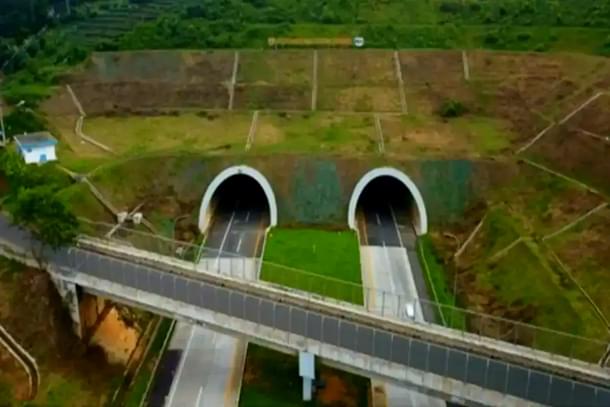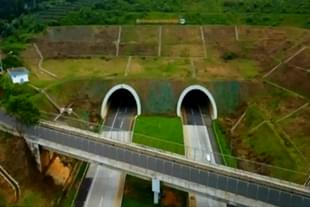Infrastructure
Bengaluru Twin Tunnel Project: 54.5 Km Network At Rs 32,700 Crore Proposed For North-south, East-West Corridors
V Bhagya Subhashini
Jul 30, 2024, 10:53 AM | Updated 11:23 AM IST
Save & read from anywhere!
Bookmark stories for easy access on any device or the Swarajya app.


The Bruhat Bengaluru Mahanagara Palike (BBMP) has determined that constructing twin tube tunnel roads is more feasible than single tube tunnels for the high-density north-south and east-west corridors in Bengaluru.
This conclusion comes from a feasibility study conducted by New Delhi-based Althinok Consulting Engineering Inc. for Rs 5.54 crore.
Following the state budget, the BBMP allocated Rs 200 crore under the “Brand Bengaluru: Sugama Sanchara Bengaluru” initiative for the preparation of the preliminary project report.
The city's average traffic speed has reduced to 15 kilometres per hour according to the BBMP's feasibility report.
According to the Deccan Herald report, twin-tube tunnels with three lanes each along the north-south corridor (Hebbal junction to Silk Board) are estimated to cost Rs 12,690 crore. In contrast, a single tube tunnel for the same distance is estimated at Rs 11,065 crore.
The project covers a distance of 18.5 km, with the total tunnel length reaching 24.5 km. The cost per kilometre for twin tubes is estimated at Rs 600 crore.
The BBMP plans to commence work along this route soon after issuing a tender. For the east-west high-density corridor (K R Puram to Mysuru Road), which spans 30 km, the estimated cost of a twin tube tunnel is Rs 18,000 crore. The total cost for both corridors, covering 54.5 km, is projected to be Rs 32,700 crore.
A senior BBMP official stated that although single-tube tunnels are less expensive, twin tubes are more feasible in terms of safety and traffic flow.
"A single tube tunnel has been constructed in Turkey, but it is only 600 meters long. For the 18.5 km length of the north-south corridor, a single tube is not feasible. More ramps and intersections would be required," the official explained.
The design for the north-south corridor shows that tube 1 will have an entry ramp towards Silk Board and tube 2 will have an exit ramp from Silk Board. Along the same corridor, tube 1 will have entry ramps from Chalukya Circle and K.R. Circle.
The second entry ramp will cross tube 1 to reach tube 2. Tube 2 will have exit ramps from Silk Board and Hebbal, with another exit ramp connecting tube 1 from Hebbal towards Dairy Circle.
V Bhagya Subhashini is a staff writer at Swarajya. She tracks infrastructure developments.




